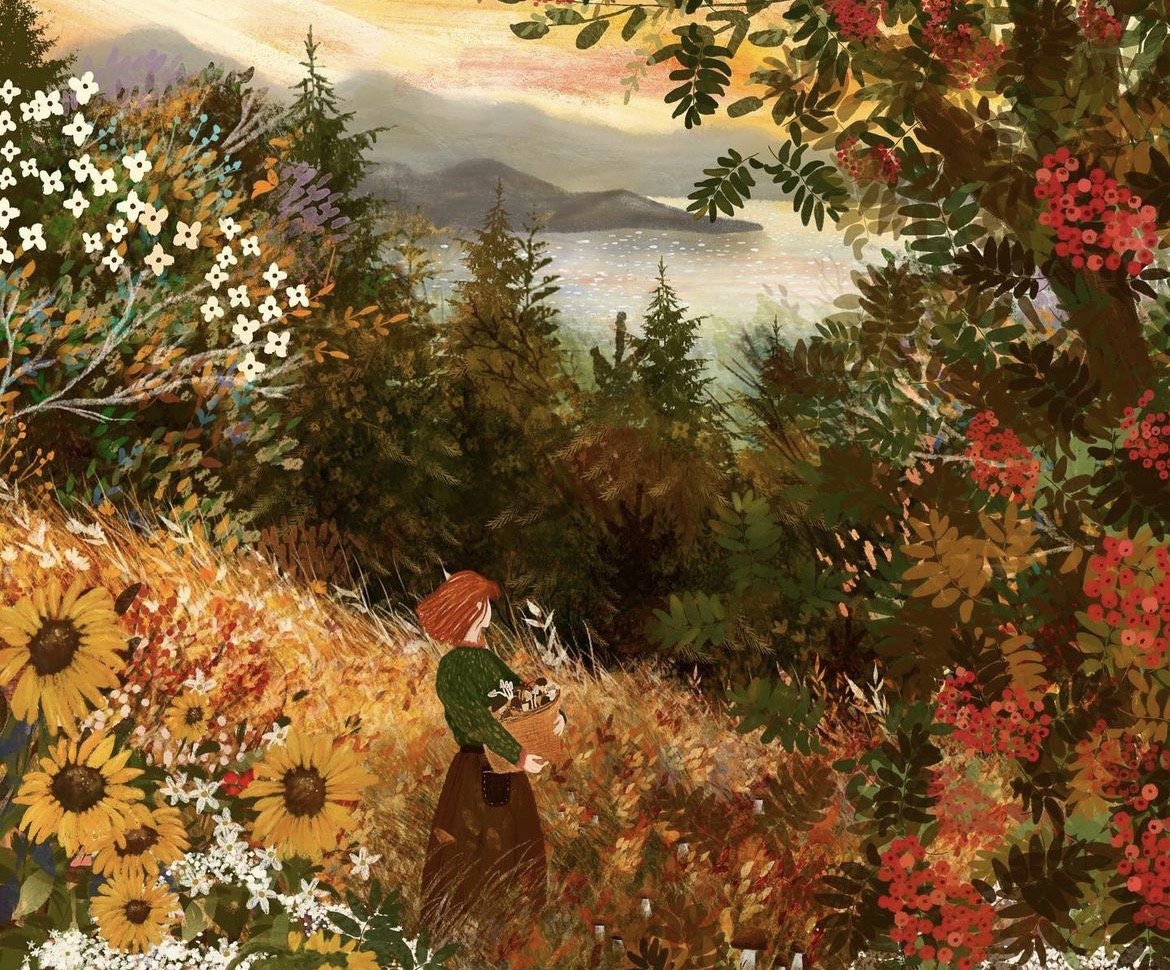For More Happiness, Move Down, Not Up
Illustration by Lavi Põder
This past weekend, those of us in the Northern Hemisphere marked the Fall Equinox, the official turning of the seasons, where the hours of sunlight and darkness became completely equal before steadily moving to shorter days leading up to the Winter Solstice.
Our congregation had a larger attendance than usual on Sunday as people were back from travels or just being out and about. This seemed fitting as I have always associated fall with home, a kind of returning, a movement towards our families and inner reflection through long walks in forests brimming with orange and red leaves.
I haven’t shared much about the book I’m working on (scheduled to be released next fall!). I’ll say more now.
It’s about cultivating a spirituality of stability and commitment in an age when we are constantly lured by social media and contemporary self-help messaging to leave our cities, relationships, and careers—convinced that we’re moving up to greener pastures.
Whereas, I believe and I have seen for myself, that the true source of happiness is not moving up and out, but moving down and in.
To literally move down, to the ground.
Touch the soil. Look at the flowers beneath you. Can you name just five different species of flowers growing in your yard or neighborhood? Or even five different species of trees nearby? Most of us can name 5 different models of cars or influencers off the top of our heads but we can’t name the natural world we inhabit, breathe in, and derive life from.
I hate to say it but this is also the case for my 7-year-old son, who can instantly name off the top of his head 5 YouTube influencers and Pokemon creatures but cannot, for the life of him, name 5 different species of flowers in our garden.
But neither can I.
Until yesterday.
I finally, for the first time since my parents have owned their property in 2001, asked my parents to share with me the names of the flowers and trees they’ve been spending every weekend planting and caring for.
We had all returned from the park, where my kids climbed up and down their favorite climbing tree. It was about 3 p.m. in the afternoon and my dad was so tired he was tempted to drive to the local coffee shop to buy an espresso. We told him to make a free cup of coffee at home instead.
But before we went in the house, he took me on a tour of the garden. Lemon balms, native wildflowers the color of scarlet, aptly named Scarlet Sage, the Live Oak Tree that my brother and I pitched in to buy for my dad’s birthday ten years ago but I haven’t looked at it since then, a Camphor tree, Bougainvilleas climbing up fences and wrapping around the wooden patio posts. Salvia Sage flowers so pink and fluttering in the breeze, it felt like they were flirting with us.
My dad, who began the tour exhausted, grew in energy and joy as he shared about our land that I took no interest in until now.
My kids, who resisted the tour at the start, where my son even said, “Mom, this isn’t something I’m interested in,” didn’t want to go back inside our house after my dad finished, preferring instead to hang out on the ladder leaning against the date tree and snack on the perfectly ripe dates right off the branches.
What finally motivated me to do this? To ask my parents about the species living in our backyard?
Well, the day after the Fall Equinox was one of those rare, lazy days in our household. Soccer practices were over, we had no birthday parties to attend, neighborhood friends were off doing their own things. My daughter asked me if I could help her make a flower soup. We grabbed a couple sand buckets we use at the beach and went around the garden, clipping whatever flowers caught her eye. Our activity was so soothing, like the most delicious massage. The sun shined softly upon us, a light breeze refreshed us.
But each time my daughter asked me to clip a flower, she did this thing that embarrassed me. She asked, “What’s this one called? What’s this one called?”
And most of the time, I was stumped.
My book is about resisting our wanderlust culture and providing readers with the tools and the spirituality to do that.
And I realized, this past weekend, that literally looking down and around is an anecdote to abating wanderlust and restlessness.
There was nowhere else I wanted to be that day than with my daughter, in our garden, making her flower soup, where the colors of crimson, forest green, lavender, and bark danced together in a glass bowl—”a magical fairy potion,” she called it. An adventure to Paris or Tokyo couldn’t have wooed me away.
I then recalled my mom sharing with me 12 years ago, how the colors of the garden alleviated her anxiety and depression.
Last week, I read the NYT profile of critically acclaimed writer, Lauren Groff, and learned that she regularly immerses herself in the natural world as a part of her creative process and god, it was so inspiring. Being in the natural world also happens to be one of the three essential soul-care practices that I’ve identified. But I realized how little time I was making for it in the past few months trying to finish my book, when, paradoxically, it probably would have spurred on my writing.
I have one month before the first draft of my book is due. One month, which falls smack dab in the middle of fall, the season with the most gorgeous color palette. So if I’m not at the desk, writing, you know where you can find me.

